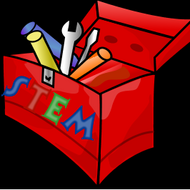
(View Complete Item Description)
Science Content Storyline: Simple MachinesBriefly write the content story for the topic: PS2.A Forces and Motion Disciplinary Core Ideas: Each force acts on one particular object and has both strength and a direction. An object at rest typically has multiple forces acting on it, but they add to give zero net force on the object. Forces that do not sum to zero can cause changes in the object’s speed or direction of motion. (3-PS2-1). The patterns of an object’s motion in various situations can be observed and measured; when that past motion exhibits a regular pattern, future motion can be predicted from it.(3-PS2-2)Educational StandardsNGSS: 3-PS2-1. Plan and conduct an investigation to provide evidence of the effects of balanced and unbalanced forces on the motion of an object. [Clarification Statement: Examples could include an unbalanced force on one side of a ball can make it start moving; and, balanced forces pushing on a box from both sides will not produce any motion at all.] [Assessment Boundary: Assessment is limited to one variable at a time: number, size,or direction of forces. The assessment does not include quantitative force size, only qualitative and relative. Assessment is limited to gravity being addressed as a force that pulls objects down.]3-PS2-2. Make observations and/or measurements of an object’s motion to provide evidence that a pattern can be used to predict future motion. [Clarification Statement: Examples of motion with a predictable pattern could include a child swinging in a swing, a ball rolling back and forth in a bowl, and two children on a see-saw.] [Assessment Boundary: Assessment does not include technical terms such as period and frequency.]Summary: Machines make work easier. Levers, inclined planes, and pulleys are simple machines that help us to do work. Work is moving something across a distance using force. Force is a push or a pull. Machines help us to do work by reducing the force needed or changing the direction of the force. There is a trade-off between the amount of effort and distance. (You can’t something for nothing!)
Material Type:
Full Course




















